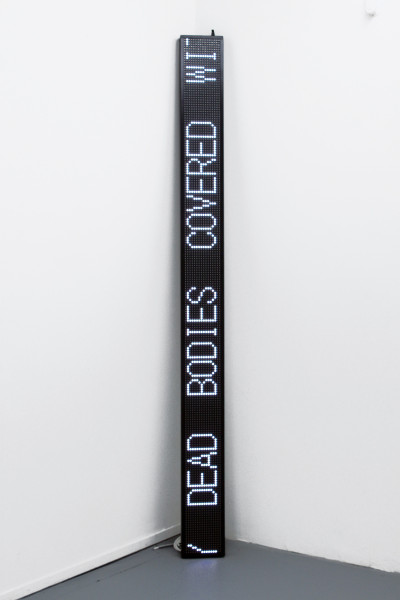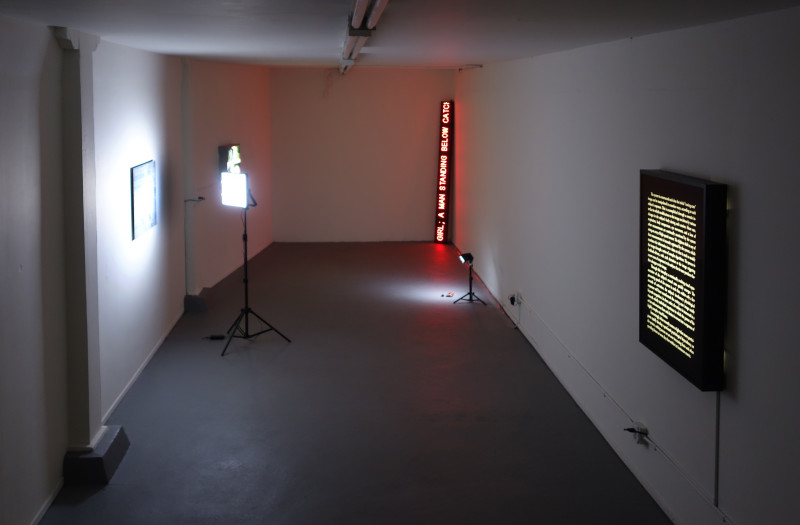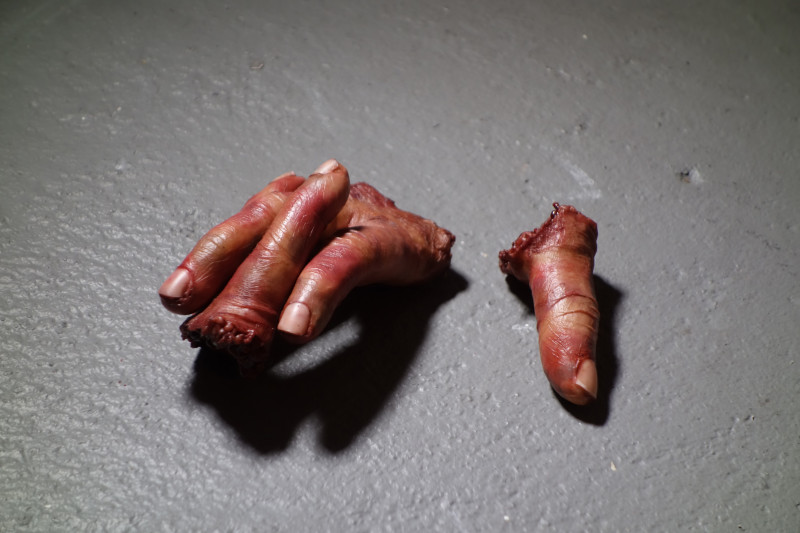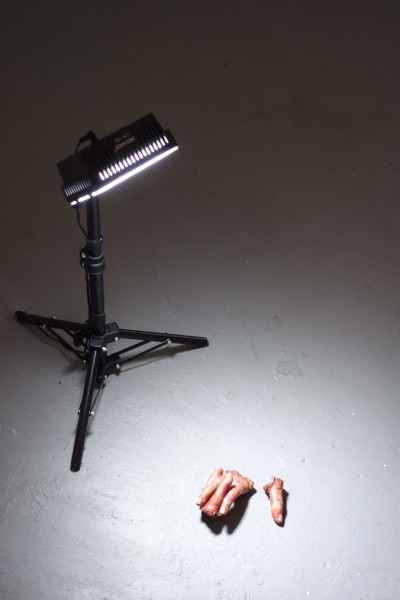“A man with a knife lunges toward a man and they fight,” scrolls across an LED sign in bold white letters, “the second man hits the first with a baseball bat and tries to inject him with a sedative, another man enters the room and is thrown into a fireplace mantel.”
This long sign is propped haphazardly against the back corner of Et al., the gallery tucked beneath a dry cleaners between the Financial District and Chinatown. Upon first read, it’s unclear what sort of account is being displayed across this single line of text — does it narrate a true crime, or perhaps a scene from a movie, novel or television show? Multimedia artist Anthony Discenza’s current solo exhibition, ‘Trouble Sleeping,’ running through Feb. 27, is an investigation into this space between subject, apparatus and meaning.

The placement of the sign itself plays up a fiction. Meant to be read horizontally, it leans on its end vertically, as if someone stashed it there but forgot to turn it off. The text in Trouble in the Interior, Part 2 continues, explaining that “a woman is shown motionless seated in a chair and we understand that she is dead,” and then, “a man with a large knife approaches her as she screams (we do not see an attack but we understand that he killed her).” The narrative is full of omniscient insertions breaking the suspension of disbelief, and jarring the reader back into a reality where they are far outside this story.
All the works in the exhibition utilize this reflexive approach, and play on the desire to locate or create a legible narrative with reminders that the works are simply that — stories. The image list discreetly reveals that the source of the text for Trouble in the Interior is an IMDB content advisory warning for an unidentified movie where scenes that might be perceived as violent, explicit, and sexual, etc. are explained in exhaustive detail. Balanced by his quirky gravitas and a measured dash of camp, Discenza pivots away from the image or subject of media, towards deliberate ruptures that expose media as the construct it is. This is the unmasking of a fiction; not the weaving of one.

Every week Discenza changes up the exhibition in ways that respond to the work previously on display. This generative project allows for each stage to respond to itself, and the gallery functions more as the artist’s studio would — privileging the work as labor that is always in process versus the primed-and-packaged finales one is used to viewing in the gallery.

Or, as Discenza suggests, Et al becomes “a laboratory,” which is an equally apt aesthetic description for the sterile visual tone of the sparse exhibition. The iterative aspect allows Discenza the opportunity to show more work over time and in turn, each piece is offered more space. At face value, the works seem disparate, like small sporadic snippets, or screen grabs, pulled together away from their original context. But over the course of all the exhibitions, the works feel like evidence or clues that he is painstakingly collecting and organizing for a reason that is becoming clearer with each show.



